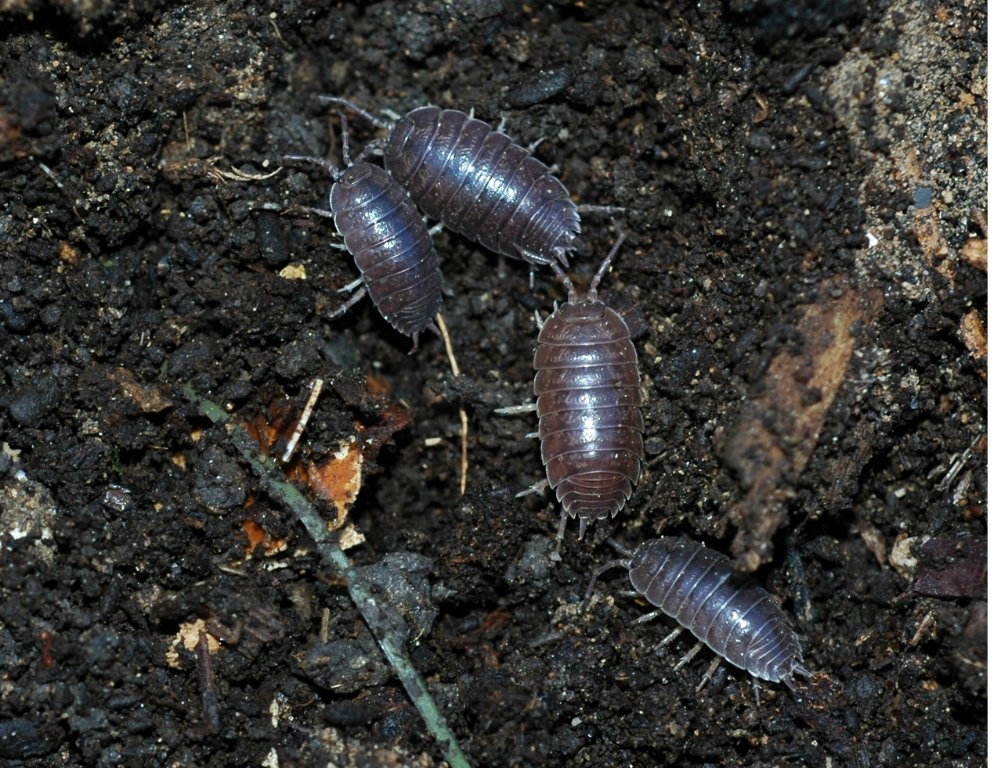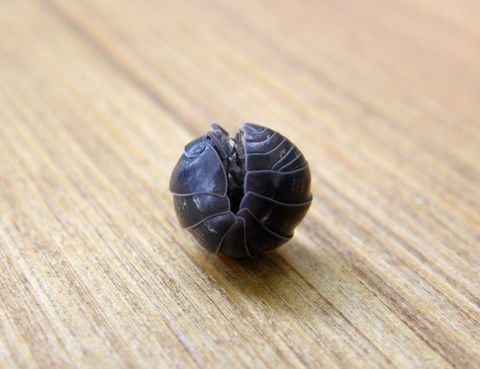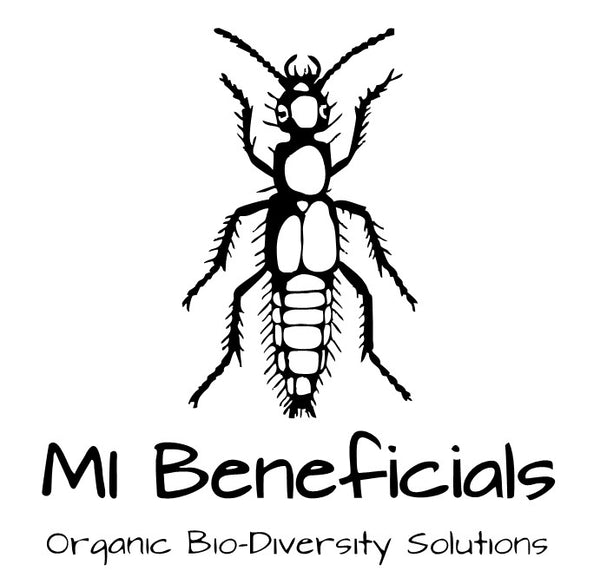
How To Manage Potato Bugs in Living Soil Containers (AKA Sow Bug, Pill Bugs, Roly Poly)
Mark AshworthShare
Pill bugs, also known as Roly Poly, Potato Bugs or Isopods, may sound familiar due to their abundance in nature and ease to find by simply flipping a rock. In nature Isopods have an important role which is cleaning up detritus, helping filter out heavy metals and acting as a decomposer to cycle organic matter into usable nutritional content for plants and trees.
In your living soil container indoors (cannabis or otherwise), there is a break in the soil food web where any predators to the Isopod might exist. Those predators in nature would include centipedes, spiders and even some small mammals. Indoors, those predators don't exist, so there is nothing to keep their population in check. This creates an overpopulation, which can lead to damage to your plants because they simply run out of food sources.
For this reason, we have come up with this guide of helpful tips on how to prevent and control a grey Isopod/roly poly issue in your indoor living soil container to minimize the negative impacts to your plants.
Prevention:
Where Do They Come From?
Compost, castings, dirt and really any aggregate material stored or produced outside WILL have Isopods in it. Prevention is as simple, and as complicated, as minimizing the amount of inputs you bring from the outdoors including those things.
How Can We Stop Them From Coming Inside?
In a Living Soil system, it is extremely difficult to avoid getting roly pollies/Isopods altogether because the best casting/compost are the ones that are teaming with life. The only way to eliminate the risk of roly pollies is to eliminate all that life altogether which is truly not a viable option.
Here are some ideas to minimize infiltration:
1. Instead of bringing leaves, wood chips or other organic matter from outdoors directly into your containers or worm bins, build them into balanced nitrogen/carbon piles and allow them to 'cook' in an isolated, indoor area where Isopods cannot reintroduce themselves.
2. Producing your own castings indoors, in bins is a great way to avoid getting any unwanted Isopods in your containers. Be mindful of your inputs and ensure nothing comes in contact with the outside.
3. Store materials, amendments and aggregates inside and away from the ground where Isopods can access them.
4. Feed your living soil containers with amendments that have been dried and sealed for storage
Looking for an option to feed your soil food web without running the risk of introducing Isopods? We use and recommend Beneboost Soil Amendment which is an organic, complete diet for beneficial soil organisms and has many health benefits for your plants. Check it out here
Control:
Of the soil based organisms, Isopods are one of, if not, THE most resilient species. In their adult stages they're well protected by their hard exterior shell which protects them from predators and also from pesticide treatments.

Furthermore, the egg and early molt stages of Isopods are protected in the mothers marsuppium or pouch (like a kangaroo). This protection makes it even harder to interrupt their life cycle as this is the generally the most vulnerable life stage.
Regardless of these hurdles, there are some things you can do to help alleviate overpopulation in the long term.
1. Potato "Trap"
Cut a fresh potato in half, scrape out an indentation from the inside and place the potato, skin side up, into your soil. Make sure to pull back any mulch layer and let the potato sit in the soil itself for best results.
Every 2-3 days, pull the potato back and, for lack of better terms, eliminate as many Isopods as you see. Personally, we squish their body and leave it in place to give it back to soil food web.
Keep in mind, this can make fungus gnat issues worse if you do not have soil predators and biology to support this. We don't recommend this method for new living soil growers.
2. Pitfall Trap
Sink 4-6 ounce cups with tall sides into your living soil bed so the lip is level with the soil line. These cups should be placed along the perimeter of your living soil bed, as this is where Isopods like to congregate and travel.
We like to place an inch of moistened Beneboost or oatmeal at the bottom of the cup and a few leaves. The reason for this, is if any desirable insects fall into the trap, they will have a place to hide and something to feed on until you check that trap. Rove beetles fall victim to these traps often.
As with the Potato Trap, check it every few days and eliminate the Isopods, freeing any other beneficials back into your container.
3. Search and Destroy Method
It is important to remember that we are trying to replicate nature inside. This method entails seeking out Isopods and squishing them manually. Understanding that they like to congregate around the edges of your containers helps you be a more efficient predator to replicate that natural element that is missing. As stated before we do leave the bodies in the container to be consumed by the soil food web. This brings us solace knowing their death is not in vain.
4. Introduce an Actual Predator

If you are into reptiles and have one, like a bearded dragon, that will actually feed on Isopods, you may be sitting on a solution. By peeling back the mulch layer and allowing your reptile to graze in your living soil bed, you can potentially eliminate hundreds of Isopods each time. We don't recommend leaving reptiles unattended during this process, but if you assist them by exposing the Isopods, they will do the rest of the work.
5. Use a Shop-Vac Around the Perimeter of the Container
This method is more destructive than the previous options and is somewhat self-explanatory. Make sure you remove that material and relocate it appropriately.
6. Remove 2-3" of Mulch and Soil
This is the most drastic option as it entails disrupting that crucial humic layer which also contains a vast majority of your aerobic, beneficial microorganisms. By peeling back your entire mulch layer, as well as 1-2" off the top of your container, you will eliminate a vast majority of the population of Isopods. Since they take a relatively long time to repopulate compared to the other soil microorganisms, this could buy you another couple years without having to do any other population control.
After scraping the entire mulch layer and 1-2", we still recommend running a Shop-Vac around the perimeter of the containers where Isopods are most likely to seek refuge.
This is potentially the best option for mid to large size living soil operations who are having overpopulation issues and don't have the personnel to run management operations as laid out here.
Additionally, that top layer of material can be put into a contained composting environment, allowing it to go thermic and casting out/killing off a vast majority of Isopods.
Other Useful Tips:
1. Making sure your soil is fed with ample defoliated material, mulch, cover crop and high-quality organic inputs will ensure that Isopods have a better choice than the roots or foliage of a live plant.
Looking for an option to feed your soil food web without running the risk of introducing Isopods? We use and recommend Beneboost Soil Amendment which is an organic, complete diet for beneficial soil organisms and has many health benefits for your plants. Check it out here
2. Avoid transplanting your cannabis into well established living soil beds until they have established, healthy roots. Planting seeds directly, dropping clones into, or taking seedlings and transplanting them into a bustling ecosystem like your living soil bed makes them more susceptible to being taken out by Isopods. We like to let our plants harden off in a solo cup before transplant for at least 2-3 weeks.
We highly recommend using our Organic Quillaja/Yucca Extract during the seedling process to improve germination rate and plant vigor. Quillaja contains tri-terpene saponins which are an organic and natural Plant Growth Regulator. Check out our Quillaja/Yucca Extract
Conclusion:
Isopods are inevitable in long-term, living soil systems indoors. The only true way to avoid them is to eliminate any outside input which simply isn't feasible. There are steps you can take to prevent, but the best compost and castings are teaming with life. To kill off Isopods, would be killing off all the other beneficial organisms that we desperately need to replicate the soil food web in our living soil container.
By utilizing most of these management techniques, we have found prolonged success in our containers without any Isopodsdamage whatsoever. Having a healthy balance of of Isopods in your soil is achievable and we hope you find some help from this article.
Read More About These Key Soil-Based Beneficial Insects
- Oribatid Mites (Oribatida)
- Rove Beetles (Dalotia coriaria)
- Stratiolaelaps scimitus (Hypoaspis miles)
- Springtails (Collembola)
- Red Wiggler Worms (Eisenia Fetida)
- Enchytraeidae (Pot Worms)
Checkout These Helpful Guides
- How To Release Your Living Soil Bio-Diversity Pack
- How To Manage Grey Potato Bugs in Living Soil Containers
- How to Make Sprouted Seed Tea with Blue Corn
- How To Use Coconut Powder in the Garden
- How to Use Aloe in the Garden
